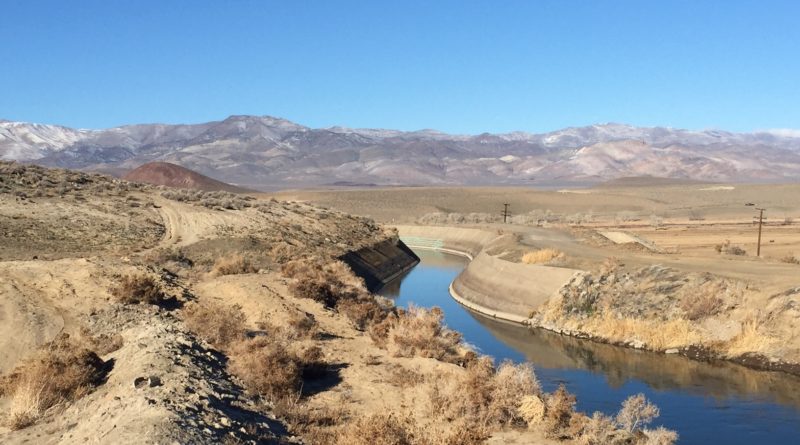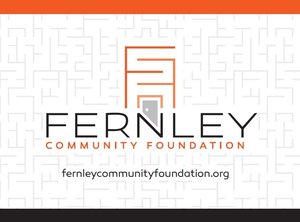City lawsuit hinges on right to seepage from canal
Robert Perea, The Fernley Reporter
The City of Fernley and more than 400 private well owners rely largely on seepage from the Truckee-Carson Irrigation District canal to keep groundwater levels recharged and their wells full.
A lawsuit filed by the city earlier this month to stop the lining of the canal hinges largely on whether the court agrees that the city and the private well owners have a right to that water.
On March 10, the City filed a lawsuit against the Bureau of Reclamation challenging the Final Environmental Impact Statement and Record of Decision for the Bureau’s Truckee Canal XM Project.
In that EIS, the Bureau of Reclamation identified five alternatives to repair the canal, and chose as its preferred alternative the lining of the 12.7 miles of the canal that flows through Fernley with a full geomembrane liner, covered with concrete.
The repair project is to permanently repair the canal after it breached on January 5, 2008, causing flooding and damage to approximately 590 homes in Fernley. TCID repaired the breach in February 2008, and the canal reopened in March 2008. Until long-term repairs are made, the canal is required to operate at a lower stage of water to reduce risk.
The City has the right to pump 8,900 acre feet of groundwater per year, but pumps about 4,000 per year. Other users, including the approximately 400 private wells and Nevada Cement, raise the permitted total to about 12,000 acre feet per year. David Rigdon, of Taggart & Taggart, has said estimates of the natural recharge of the basin’s groundwater range from 600 to 1,500 acre feet per year, while estimates of recharge from the canal range from 8,000 to as much as 18,000 acre feet per year.
“If we relied strictly on recharge from natural rainfall, there would be a significant shortfall,” Rigdon told the City Council on April 1, 2020.
Without the recharge from the canal, Rigdon said during a Zoom meeting with the city and residents last April 28, models show that if the canal is lined, the shallowest private wells would dry up within the first year. He said those same models also show that 71 percent of them would be dry within 40 years.
But Rigdon said, the Bureau of Reclamation disputes Fernley’s right to that water.
“They don’t think that’s a problem because they don’t think we have a right to that water,” Rigdon said.
The city’s disagreement is the heart of its lawsuit, and stems from the establishment of the Newlands Project. The canal was built in 1905 as part of the Newlands Project to entice settlers. The canal transports water from the Truckee River, where it is diverted at Derby Dam, to Lahontan Reservoir.
“The whole purpose for constructing the canal was to entice people to move to the area and establish towns and cities,” city manager Daphne Hooper said. “Now that those communities exist, and the people are reliant on water from the canal, the federal government wants to cut off a significant portion of their water supply.”
The rights to the waters of the Truckee River, including the water diverted to the 2 Newlands Project via the Truckee Canal, were formally adjudicated in a ruling commonly known as 3 the Orr Ditch decree, which states that Newlands Project water is to be used for “supplying the inhabitants of cities and towns on the project for domestic and other purposes.”
“This is exactly what Fernley and its citizens have used the water for,” Hooper said.
The lawsuit asks the Court to recognize that the City and its citizens are dependent on the water from the canal, that they have a right to rely on continued recharge from the canal, and that the Bureau’s project needs to either be designed to allow the recharge to continue or provide mitigation to those who will be hurt. In the suit, the City cites several reasons, including previous court decisions, that it says reaffirm its right to the continued recharge from the canal.
The Bureau of Reclamation’s Final EIS includes a draft of a letter from BOR Regional Director David Murillo to Paul Taggert of Taggart & Taggart with a stamped date of May 24, 2013, in which Murillo refutes each of the City’s claims to the seepage from the canal.
“We are not persuaded that the Nevada law grants to the City any right to the continued existence of seepage water from the Truckee Canal,” Murillo wrote.
The City has also proposed several alternatives that it says would fix the safety problems with the canal without cutting off the recharge to the aquifer. Those include reconstructing the existing walls of the canal and including some form off cutoff wall (cement, steel, or vinyl) within the newly reconstructed embankment, maintaining the current stage restrictions, using a trench and fill method to install a concrete wall within the existing canal embankment, and adding a groundwater recharge component to the existing project.
The City says none of these alternatives were analyzed in the Bureau’s FEIS.



